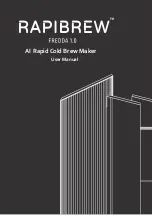
4
6
2
Manufacturing Inc.
ACL
ACL 2000 FLAME FAIL IGNITION SYSTEM
Principle of
Operation
The ACL 2000 safely provides pilot ignition and ensures flame fail protection
through a high temperature thermocouple and CSA approved gas valve. By
pushing the gas valve button, fuel gas is released and ignited by the spark
generated at the pilot nozzle tip by the piezo (ignitor) button. With the pilot
flame present, the thermocouple is energized by the produced heat, which
holds the gas valve in the open position and allows flow of fuel gas. When the
pilot flame is not present, the thermocouple de-energizes by cooling, effectively
closing the gas valve. The pilot flame may be field adjusted by the built-in
needle valve to achieve optimal performance.
The recommended mounting location of the ACL 2000 is from one side of the
burner at a 45 degree angle through a 1” connection (either a collar or a union).
If a 1” nipple is used for proper positioning, schedule 40 piping is
recommended.
Pilot nozzle tip
must not
extend past the burner into the main flame.
A clean, steady dry fuel gas supply (25 PSI max.) is required for reliable
operation. When only wet gas is available, it is recommended that a coalescing
filter be installed before the gas leaves the heated building or directly after the
filter regulator.
Purge air and debris from lines prior to operating ACL 2000.
The gas valve has been factory tested/set for use with a 20 PSI fuel supply and
should require no adjustment. If necessary, fine tuning is possible after ignition.
Thermocouple operation may be affected if pilot flame is too large (flame lift-off
may occur) or too small (not enough heat) - both conditions will not allow the
gas valve to open.
1. Push and hold gas valve button.
2. While pressing gas valve button, push piezo (ignitor) button.
3. Release gas valve button after 20 seconds (or until thermocouple has
heated enough to hold gas valve open)
4. Confirm gas valve is open by pressure reading on output gauge.
5. Repeat procedure if pilot does not light.
Installation and
Start-up
Operating
Instructions


























